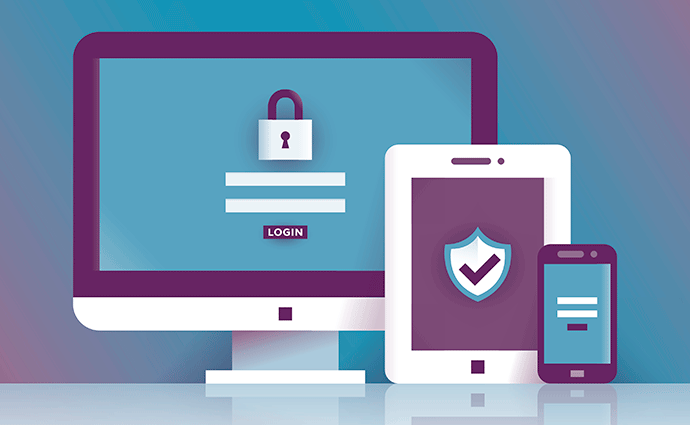New Partnership Gives Pharmacies mHealth Tools for Diabetes Prevention
The American Pharmacists Association is spearheading a national effort to give pharmacies access to mHealth and telehealth tools to expand the reach of the APhA Foundation's Diabetes Prevention Program.

Source: ThinkStock
- The American Pharmacists Association (APhA) is making mHealth and telehealth an integral part of its diabetes prevention efforts in underserved communities through a new partnership.
The APhA Foundation announced last month that it would join forces with The Kroger Company and Tabula Rasa Healthcare to add connected health elements to its CDC-approved National Diabetes Prevention Program, called Project IMPACT: Diabetes Prevention. The program, unveiled in 2017, aims to push health and wellness resources and coaching to at-risk populations across the country through pharmacies serving those populations.
The new partnership puts the spotlight on telehealth and mHealth tools “that optimize delivery of the National DPP’s lifestyle change program.”
“The innovative, hybrid model of care that is being delivered through Project IMPACT: Diabetes Prevention includes a combination of face-to-face, telehealth, and digital technology solutions that allows providers to tailor the program to meet the individual needs of the participants and help them successfully complete the diabetes prevention program,” APhA Foundation officials said in a January press release announcing the new effort.
To examine the partnership in more detail, mHealthIntelligence.com recently spoke to Benjamin Bluml, RPh, the APhA Foundation’s Senior Vice President of Research and Innovation, as well as Dr. Calvin Knowlton, Tabula Rasa’s Founder, CEO and Chairman, and Nicole Scovis, the company’s Director of Strategic Growth.
READ MORE: Integrating a Telehealth Platform into a Diabetes Prevention Program
Q. How can telehealth or mHealth be used to augment a Diabetes Prevention Program?
“The CDC’s National Diabetes Prevention Program has historically been offered almost exclusively through a single method of participation,” said Bluml. “Participants either sign up for education sessions offered via in-person classes, or they sign up for a telephonic distance learning program, or they sign up for an online digital program. The unintended consequence of a single-track offering can result in a high dropout rate, in large part due to inevitable personal schedule conflicts inherent in a program that requires 12-months of participation.”
The APhA Foundation’s program “offers the unique omni-channel option of having individuals participate through multiple modes throughout the year and ‘meets people where they are,’” he added. “The expected benefit is more participants completing the classes, achieving their goals, and more people avoiding or delaying the onset of diabetes.”
“The program is a combination service delivery offering, meaning that the program is offered via multiple modalities including telehealth and digital technology platforms,” said Knowlton. “Participants experience the CDC Prevent T2 curriculum via access to on-demand digital recordings with a certified lifestyle coach. Following each digital session, participants engage in virtual group sessions with their lifestyle coach to reinforce and apply the concepts learned. Both digital content and telehealth sessions are available via computer, mobile device, or telephone. This unique delivery model eliminates barriers to participation, including scheduling and transportation issues, (thus) improving access to proven diabetes prevention strategies."
Q. How might pharmacists use this technology to improve care?
More than a third of the US population is at risk of developing diabetes, and yet many don’t realize it, says Bluml.
“The APhA Foundation and our partners believe these (roughly) 84 million adults with prediabetes could benefit from the high accessibility of pharmacies and the clinical skills of pharmacists, in receiving screening, detection, and prevention of diabetes,” he said. “By offering the proven CDC National Diabetes Prevention Program in conjunction with community pharmacy services across the country we believe we can help stem the tide of the diabetes epidemic.”
Bluml said pharmacies joining this effort “need to already have demonstrated a commitment to helping their communities improve health, over and above the important medication dispensing services.” They also need to prove that they can sustain such a program. The APHA Foundation‘s partnership with Tabula Rasa aims to give those pharmacies the resources they need to launch such a program and keep it up and running.
“Tracking of metrics is a difficult, but necessary part of any Diabetes Prevention Recognized Program,” said Scovis. “This CDC recognition is necessary for billing for Medicare beneficiaries. In a combination service delivery model, data tracking becomes even more challenging because of the multiple sources of information. The IMPACT Diabetes platform, hosted by the APhA Foundation … allows for easy tracking of attendance, weights and other required metrics in a combination service delivery model.”
“Our approach is to use community pharmacy-based screenings to identify people who are unaware of their risk and offer them a convenient solution,” Bluml said. “In doing so we provide a solution at a place they already visit, we use people they already confide in – their community pharmacist - and we make it convenient to learn and be coached to a healthier lifestyle. If someone’s schedule is too crazy to attend in-person group classes at their community pharmacy, they can still participate via a telephonic or on-line option.”
Q. What new telehealth or mHealth tools might be introduced to DPPs in the future?
“Leveraging new technologies to support people in being more informed and engaged in their health, well-being and self-management is mission-critical for our future efforts,” said Bluml. “This is the essence of what so many of these new telehealth and mHealth technologies can offer - if we are thoughtful about how we engineer them to focus on advancing patient knowledge, skills and performance for prevention and health management.”
“Integration with consumer apps, mobile health devices and pharmacy workflow management systems can help to engage and retain participants in the program,” added Scovis. “Identification of individuals at high risk for adverse drug effects … may also help to prioritize engagement strategies in the future.”
